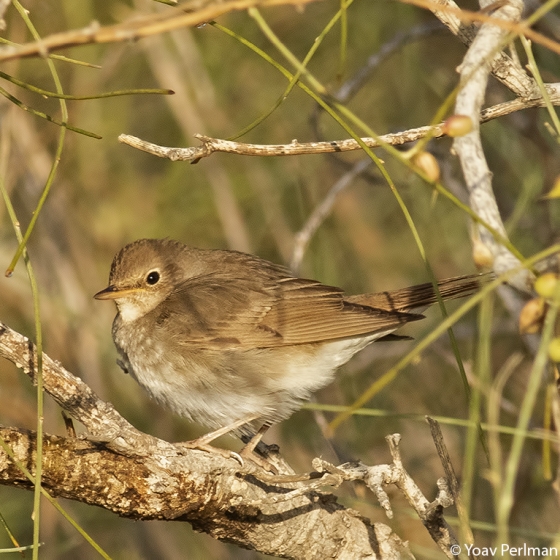Thrush Nightingale
Luscinia luscinia (Linnaeus, 1758)
FN
 THRNI
THRNI  11030
11030

Family: Passeriformes > Muscicapidae

The Thrush Nightingale's breeding distribution sits to the east of that of the Common Nightingale, and extends further to north.
This is a scarce visitor to Britain, with roughly two-thirds of the records coming from Scotland, where it tends to be a spring bird.
Identification
Develop your bird ID skills with our training courses
Our interactive online courses are a great way to develop your bird identification skills, whether you're new to the hobby or a competent birder looking to hone your abilities.
Browse training coursesStatus and Trends
Population size and trends and patterns of distribution based on BTO surveys and atlases with data collected by BTO volunteers.
DISTRIBUTION
This species is a rare vagrant and was recorded during Bird Atlas 2007–11 as shown on the map.
More from the Atlas Mapstore.
Movement
Information about movement and migration based on online bird portals (e.g. BirdTrack), Ringing schemes and tracking studies.
RINGING RECOVERIES
View a summary of recoveries in the Online Ringing Report.
Foreign locations of birds ringed or recovered in Britain & Ireland

Biology
Lifecycle and body size information about Thrush Nightingale, including statistics on nesting, eggs and lifespan based on BTO ringing and nest recording data.
PRODUCTIVITY & NESTING
Sample sizes are too small to report Productivity and Nesting statistics for this species.
BIOMETRICS
Sample sizes are too small to report Biometrics for this species.
Feather measurements and photos on featherbase 
CODES & CLASSIFICATION
Field Codes 
|
2-letter: FN | 5-letter code: THRNI | Euring: 11030 |
For information in another language (where available) click on a linked name
Would you like to search for another species?






Share this page